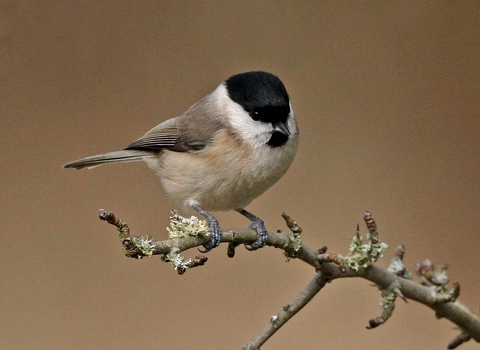
©Margaret Holland
Marsh tit
Despite its name, the marsh tit actually lives in woodland and parks in England and Wales. It is very similar to the willow tit, but has a glossier black cap and a 'pitchoo' call that sounds like a sneeze!
Enw gwyddonol
Poecile palustrisPryd i'w gweld
January to DecemberSpecies information
Categori
Ystadegau
Length: 13cmWingspan: 22cm
Weight: 13g
Average lifespan: 2 years
Classified in the UK as Red under the Birds of Conservation Concern 5: the Red List for Birds (2021). Priority Species under the UK Post-2010 Biodiversity Framework.
Cynefinoedd
Ynghylch
The marsh tit is a small, mainly brown bird, with a shiny black cap, neat black bib and pale belly. It is so similar to the willow tit that ornithologists didn't realise they were two separate species until 1897!Despite their name, marsh tits are most often found in broadleaf woodland, copses, parks and gardens. They feed mostly on insects, seeds and berries, and often cache food over winter if they find a good supply. They nest in existing tree holes, rather than excavating their own, and produce seven to nine eggs.
